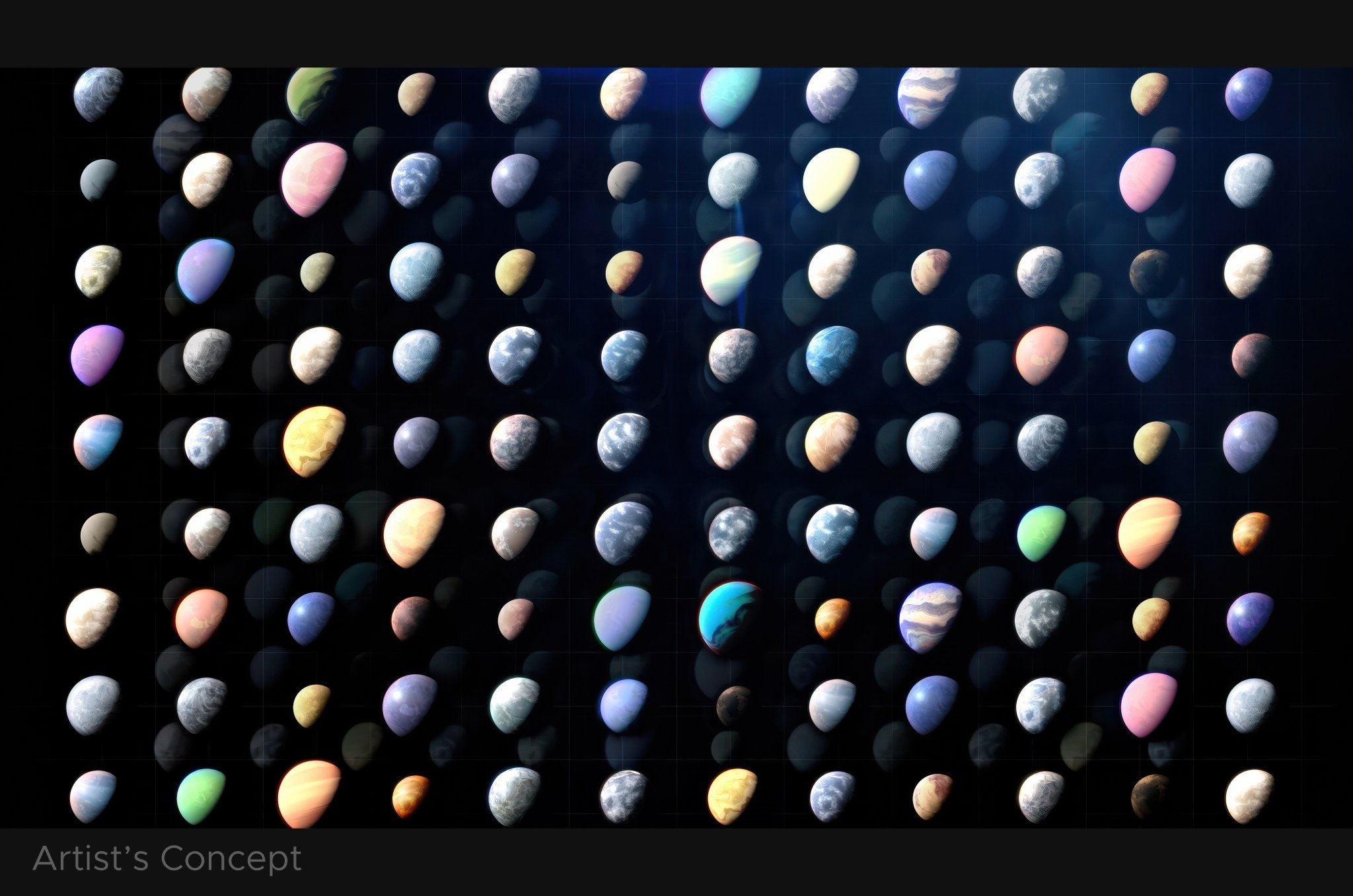NASA Confirms 6,000 Planets Beyond Our Solar System
Language
Reading Level
Listen to Article
Alignment

For the past 30 years, scientists around the world have been searching for planets beyond our solar system. Known as exoplanets, these worlds come in all shapes and sizes, each orbiting its own star. On September 17, 2025, NASA officially confirmed the existence of 6,000 exoplanets. Even more exciting, an additional 8,000 are just waiting to be verified!
"This represents decades of space exploration driven by NASA telescopes," said NASA scientist Shawn Domagal-Goldman. "It has completely changed the way we see the night sky."
Exoplanets come in all shapes and sizes. Some are rocky like Earth, with solid surfaces that could potentially support life. Others are massive gas giants, many times larger than Jupiter. They are made mostly of hydrogen and helium. Some planets have surfaces of molten lava that glow under their stars’ heat. Others are so airy, they almost seem weightless. A few exoplanets even have clouds made of shiny gemstones creating skies unlike anything in our solar system.
"Every type of planet we discover tells us how planets form and how common Earth-like worlds might be," said Dawn Gelino, head of NASA’s Exoplanet Exploration Program. "If we want to know whether we’re alone in the universe, this knowledge is essential."
While NASA's powerful telescopes help, finding these planets is not easy. Unlike stars, planets give off almost no light. They are also thousands of times smaller than the stars they orbit. As a result, fewer than 100 exoplanets have been directly photographed. Most have been found through other methods.
For example, the transit method looks for small changes in a star’s brightness. When a planet passes in front of its star, it blocks a small portion of the light. By measuring this dimming, scientists can tell a planet is there, even though they cannot see it directly. Another way to find these distant worlds is by detecting tiny bends in a star’s light caused by a planet’s gravity. It is, therefore, not surprising that confirming a new planet takes years of careful observation.
With so many exoplanets discovered, NASA is turning its attention to those most like Earth. Upcoming missions will study these planets more closely. This, however, will not be easy because stars shine billions of times brighter than their planets. To address this, NASA is developing advanced instruments that are designed to block out starlight. These tools could increase the chances of finding planets like ours — and perhaps even alien life!
Resources: NASA.gov, Wired.com, NPR.com

Get the Workbook for this article!
Workbook contains: Article, Reading Comprehension, Critical Thinking Questions, Vocabulary in Context (+ answers), Multiple Choice Quiz (+ answers), Parts of Speech Quiz (+ answers), Vocabulary Game (+ answers)Cite Article
Learn Keywords in this Article
21 Comments
- butolynevypi3 daysAnd my sister doesn't believe in aliens!!!
- felosuzetugy17 daysWOW!!! Now I really need to get ready when aliens come.
- darkstalkerulze23 daysI think there is GOOGLE PLEX more stars in the universe
- zoeyc24 daysi wonder how much planets there's really in the universe!
- dusesuvufapo29 daysmakes us feel small
- fnafisgoodabout 1 monthit kool :3
- sahavowucuviabout 1 monthWhat if there are alien?
- animaidocter13about 1 monthHow do they know what planets are out there that's so cool
- fanny-brothaabout 1 monthI think it is soo cool that some of the exoplanets have life though I wish it was in our solar system because that would have to be like a long way away from our solar system and that means sooooooo far away from earth.
- muryjoganibiabout 1 monthi wonder if alians are like,"hey! a planet with water!
- libyrozydatuabout 1 monthI think alens are gonna